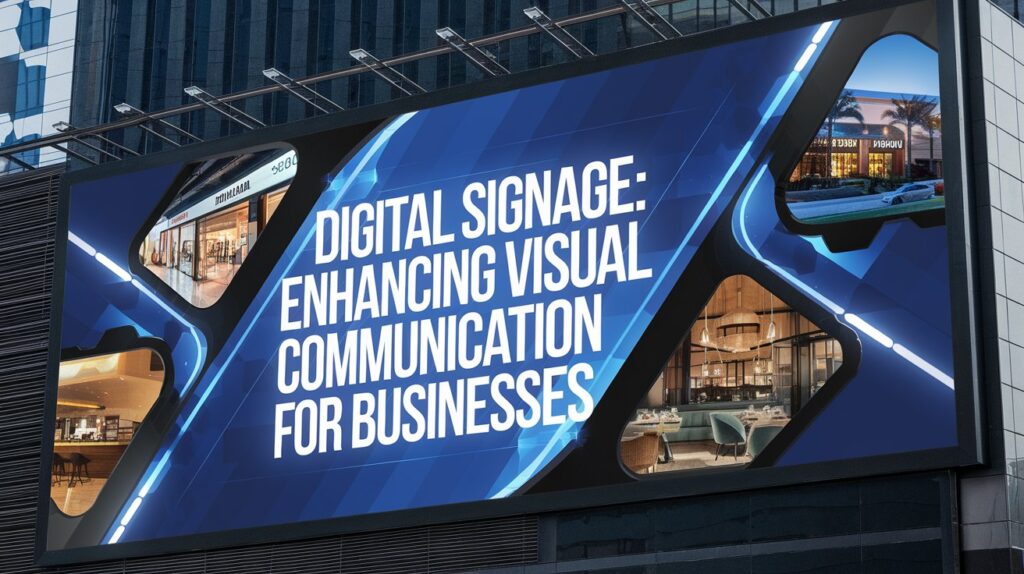Effective communication plays a key role in business operations. Digital Signage has become a widely adopted solution for conveying information in a visually engaging manner. Businesses use this technology to present real-time updates, brand messaging, and essential information in an efficient way. Whether deployed in retail spaces, corporate environments, or public areas, digital signage enhances the way information is shared and consumed.
The Evolution of Visual Communication
Visual communication has progressed significantly over the years. Traditional static displays, printed materials, and manual signage were once primary methods of sharing information. The introduction of digital signage has changed the landscape by allowing businesses to deliver dynamic content tailored to specific audiences. High-resolution displays, interactive elements, and remote content management contribute to a seamless and effective communication strategy.
Applications Across Various Industries
Retail businesses use digital signage to showcase promotions, highlight product details, and improve customer engagement. In corporate settings, these displays streamline internal communication by displaying company announcements, performance metrics, and schedules. Healthcare institutions implement digital screens to guide patients, display health information, and enhance visitor experiences. Educational institutions integrate this technology to share academic updates, event schedules, and emergency notifications. Hospitality and transportation sectors also rely on digital signage to enhance wayfinding and deliver important messages to passengers and guests.
Advantages of Implementing This Technology
One of the primary benefits of digital signage is its ability to deliver real-time content updates. Businesses can instantly modify messages, ensuring that information remains current and relevant. This flexibility is particularly useful for industries that require frequent updates, such as retail and transportation. Additionally, digital signage reduces the dependency on printed materials, leading to cost savings and environmental benefits.
The integration of interactive features allows users to engage directly with displayed content. Touchscreen kiosks, QR code scanning, and sensor-based displays enable a more immersive experience. These features improve customer interaction and provide valuable insights into user behavior, helping businesses refine their communication strategies.
Technical Aspects and Content Management
Effective digital signage solutions require a combination of hardware and software components. High-definition screens, media players, and cloud-based content management systems work together to deliver seamless visual communication. The ability to schedule and automate content updates simplifies operations, ensuring that displays remain relevant without manual intervention.
A key aspect of digital signage is content optimization. Businesses must consider factors such as screen placement, readability, and design aesthetics. Well-structured content with appropriate font sizes, contrasting colors, and concise messaging ensures maximum visibility and comprehension. Video integration further enhances engagement by capturing attention and conveying information effectively.
Future Trends in Visual Display Technology
Advancements in display technology continue to shape the future of digital signage. The development of ultra-high-definition screens, LED panels, and transparent displays enhances visual clarity and impact. Artificial intelligence is playing a growing role in content personalization, allowing businesses to tailor messages based on audience demographics and behavior patterns.
The integration of data analytics helps businesses measure the effectiveness of digital signage. Metrics such as audience engagement, dwell time, and conversion rates provide valuable insights that inform future content strategies. As businesses increasingly adopt these data-driven approaches, digital signage continues to evolve as a powerful communication tool.
Key Considerations for Businesses
Selecting the right digital signage solution requires careful planning. Businesses must assess their communication objectives, target audience, and content requirements before implementing a strategy. Choosing the appropriate display size, resolution, and placement ensures optimal visibility and impact.
Content scheduling plays a critical role in maintaining audience interest. Rotating content at appropriate intervals prevents monotony and keeps information fresh. A well-structured content plan ensures that messages are delivered at the right time to the right audience.
Conclusion
The adoption of Digital Signage has transformed the way businesses communicate. With its ability to deliver dynamic content, engage audiences, and streamline information dissemination, it has become an essential tool across various industries. As technology continues to advance, businesses will have more opportunities to leverage digital signage for effective communication strategies.






